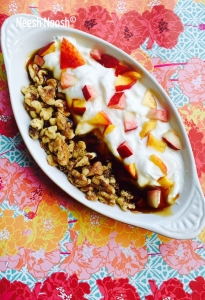We enter the fifth and final book of the Torah, Devarim (Deuteronomy). In this week’s Torah portion, also called Devarim, the Israelites are on the precipice of entering the Promised Land. Moses begins to recount the laws, teachings and events of the Israelites 40 years in the wilderness.
We are–individually and collectively–on journeys to the Promised Land. It’s our spiritual journeys. And, it’s about our responsibilities to our world by pursuing tzedek (justice) and tikkun olam (repairing the world). And though, like Moses, we won’t necessarily reach the Promised Land, we are obligated to act for ourselves and future generations. It is taught, “It is not your responsibility to finish the work [of perfecting the world], but you are not free to desist from it either” (Ethics of the Fathers 2:16).
In a historic speech, on the night before he was killed, the Rev. Dr. Martin Luther King said “And I’ve seen the Promised Land. I may not get there with you. But I want you to know tonight, that we, as a people, will get to the Promised Land.” The vision and leadership of Moses and Martin Luther King should be inspirations for us in our daily lives as we collectively journey to the Promised Land. As Rabbi Isaiah Rothstein writes, “Learn from Moses. Learn from Dr. Martin Luther King. Speak up, for once you begin to speak, you create the opportunity for even a sea to split.”
The dish I created this week is inspired by the idea of standing at the precipice of the Promised Land. The simple walnuts represent the wilderness. A long stream of honey symbolizes the Jordan River.
The yogurt and honey are also symbolic of Israel being described as the “land of milk and honey.” I added stone fruits to the yogurt because their inedible, hard centers remind me of the part of us, like Moses, that at some level we will never get to the Promised Land. There is a teaching that if you hear that the Messiah is coming and you’re planting a tree, first you finish planting the tree.
Our spiritual journeys and work for social justice continues even if we are living in the physical Promised Land. Like our ancestors, the modern country of Israel continues its nation building process. We are still working towards Dr. King’s vision of racial equality for all Americans. Each day, we face obstacles and challenges in our spiritual work. Rabbi Yoel Glick writes, though, “What greater happiness can there possibly be than to live life, accepting no excuses and looking for no results, simply striving joyfully towards the goal [oneness with God] with all of our might.”
Devarim: Fruit, Nuts and Honey
Ingredients
2 cups organic vegan or dairy plain yogurt
3 tbsp plain walnuts
3-4 tbsp honey
2-3 different organic stone fruits, chopped
2 cups yogurt
Preparation
1. Wash fruit thoroughly and chop into small pieces. (learn why you should opt for organic stone fruit)
2. On a platter or dish, place walnuts along one side and yogurt on opposite side to represent the separation of the wilderness and the Promised Land.
3. Top yogurt with fruit and fold slightly, if desired.
4. Add honey to middle of plate, between nuts and yogurt mixture.
B’tayavon!





This interpretation is so wonderful and helpful. I can’t wait to make this delicious looking recipe!
LikeLiked by 2 people
Great and thank you–I hope you enjoy it!
LikeLike
Always heartfelt and colorful. Yummy thoughts come out when reading your blog.
LikeLiked by 1 person
Thanks for your generous comments. Shabbat shalom
LikeLike
The plate on background of this specific Parashat Hashavua makes me feel a kind of a masterpiece, I am shure the taste is as well, I am going to prepare it soon. Thank you.
LikeLiked by 1 person
Thank you so much and I’m thrilled that you will prepare it!
LikeLike
This looks so beautiful I would love to try this recipe.
LikeLike
Thank you so much!
LikeLike